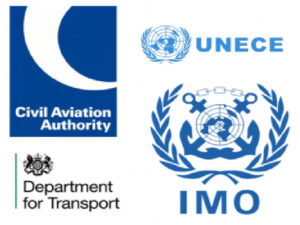IATA 64th Edition 2023
It’s that time of year again ! The International Air Transport Association (IATA) has introduced a number of important changes and amendments in its 64th edition of the IATA Dangerous Goods Regulations (DGR) manual. Mandatory compliance with this new edition starts on the 1st of January, 2023. The changes introduced by the IATA on the 64th edition includes all amendments made in the ICAO Technical Instructions (edition 2023-24). If you have any questions with the changes that need to be implemented, please do not hesitate to contact us
According to the IATA, the list of changes and amendments it has published aims to assist users in identifying the major changes incorporated in the 64th edition, but the list is not exhaustive. The notable items in the list are described as follows:
Section 2 – Limitation Changes
2.3 – Dangerous Goods Carried by Passengers or Crew
With regard to mobility aids (battery-powered), the provisions have been revised to identify that removal of batteries is only necessary when the mobility aid design does not offer sufficient protection against potential battery damage. (Notably, when the mobility aids contain spillable batteries, the requirements for handling, loading, stowing upright, or removing the battery remain unchanged.)
2.6 – Dangerous Goods in Excepted Quantities
A revision has been made clarifying that a dangerous goods package with excepted quantities can also include goods that are not covered under the Regulations.
2.8.1 – State Variations
A revision is made in the list (2.8.1) and the List of State Variations to include new states in addition to amended variations for existing states.
Section 3 – Classification Changes
The following revisions have been made:
- The provisions for classification of organic peroxides and self-reactive substances are revised to align completely with the wordings included in the UN Model Regulations.
- It is clarified that mixtures or substances that are classified as corrosive should be earmarked to Packing Group I when the test results don’t suggest a different packing group.
- Revision is made to lithium battery test summary requirements – test summary is no longer required for the button cells included in the equipment.
Section 4 Identification Changes
4.2 – List of Dangerous Goods
Changes to the dangerous goods list include:
- Per package maximum net quantity on cargo aircraft has been changed for wet batteries with acid (UN 2794), wet batteries with alkali (UN 2795), and cells with sodium (UN 3292) from “Unlimited” to 400 kg. UN specification packages should be used to pack these articles (the limit for which is 400 kg).
- Special Provision A154 has been added to the entries for battery-powered vehicles (UN 3171), engines and machinery (UN 3528, 3529, and 3530), life-saving appliances (UN 3072), and vehicles (UN 3166).
- A new entry has been added – Cobalt dihydroxide powder (UN 3550).
- Ethyl bromide (UN 1891) has been reclassified to Class 3 (from Division 6.1) with a subsidiary hazard Division 6.1.
- Extracts, aromatic, liquid (UN 1169) is deleted and UN 1197 shipping name is changed to “Extracts, liquid” (for aroma or flavor).
- Where applicable, packing groups have been added to entries indicated as “forbidden/forbidden” along with a proper shipping name and UN number. When a packing group is assigned, it constitutes a part of the classification.
4.4 – Special Provisions
Changes made to the existing special provisions are as follows:
- With regarding special provisions A1/A2, a sentence has been added to specify that when an approval is made for dangerous goods, the authorization column in the Shipping Declaration should mention A1 or A2 as may be applicable.
- A176 is amended to specify that when approval is given for metal hydride storage, the authorization column of Shipping Declaration should mention the special provision number.
New special provisions are as follows:
- A221 – assigned to compressed air (UN 1002) identifying that oxygen and nitrogen mixtures in specified concentrations may be shipped as UN 1002 without a requirement for a subsidiary hazard label Division 5.1.
- A223 – assigned to self-inflating life-saving appliance (UN 2990) and non-self-inflating life-saving appliance (UN 3072), identifying that these devices may be shipped as “non-restricted” cargo.
- A224 – assigned to articles consisting of miscellaneous dangerous goods (UN3548) identifying that the items with environmentally hazardous elements can be transported as cargo on a cargo or passenger aircraft as per the Packing Instruction 975 provision. Moreover, special provision A2 will not apply in this case.
- A225 – assigned to articles consisting of non-toxic, non-flammable gas (UN 3538) identifying that the items with a Division 2.2 gas without any subsidiary hazard can be transported as cargo on a cargo or passenger aircraft as per the Packing Instructions 222 provisions. Moreover, special provision A2 will not apply in this case.
Section 5 – Packing Changes
Packing Instructions
List of Inner Packagings – Table 5.0.B
The reference to plastic and metal aerosols has been removed from this list.
PI Y963, PI Y203, and PI 203
These packing instructions have been amended to remove all details of plastic and metal aerosols. There is now a 1,000 mL standard capacity for metal receptacles and aerosols, gas cartridges (small containing gas), and a 500 mL standard capacity for plastic receptacles in accordance with the UN Model Regulations provisions.
PI 972, PI 378, and PI 220
These packing instructions have been amended to include additional packaging requirements, which identify that machinery or engine should be fixed in crates, cradles, or other handling devices or packed in resilient outer packaging – unless the construction and design of the machinery or engine offer adequate protection for dangerous goods containment. Additional provisions have also been made identifying that machinery or engine are not permitted for shipping if their lithium batteries are defective or damaged.
PI 975 and PI 222
Revisions have been made to include these packing instructions in order to address the packaging provisions for articles with non-toxic, non-flammable gas (UN 3538) and articles with miscellaneous dangerous goods (UN 3548), as long as the items meet the conditions listed under A224 / A225 special provisions respectively.
PI 870
A revision has been made to remove reference to packaging provisions related to batteries that are installed in equipment. In this case, the appropriate classification is battery-powered equipment (UN 3171) and PI 952 will apply.
PI 952, PI 951, and PI 950
Revision has been made to identify that a vehicle cannot be transported if its lithium metal batteries are defective or damaged.
PI 968 and PI 965
A revision has been made to include a requirement that every package prepared according to Section IB should have the capability to sustain the 3 m stack test, which is applicable to packages of limited quantity.
PI 970, PI 969, PI 967, and PI 966
A revision is made to Section II provisions specifying that for packages placed in an overpack, the packages should be secured. Secondly, each package’s intended function should not get impaired because of the overpack.
Section 6 – Packaging Specifications & Performance Test Changes
- The 64th edition has deleted the requirements for aerosols.
- The provisions for construction, design, and testing of cylinders (incl. UN cylinders) as well as their initial/periodic inspections are now revised.
- The provisions for gas cartridge and aerosol test requirements are now revised.
Section 7 – Marking & Labeling Changes
A revision has been made to the mark for lithium battery – a telephone no. to be included in the mark is no longer a requirement. A transition period has been specified until December 31st, 2026 when the mark specified in the DGR manual 63rd edition may be used.
Section 8 – Documentation Changes
Dangerous goods statement to be mentioned on the airway bill – the transition period for this requirement is now extended for another 2 years until December 31st, 2024.
Section 9 – Handling Changes
Provisions related to label replacement on packages (when the labels are illegible, detached, or lost) are now revised to include a new requirement for marks, such as limited quantity marks or excepted quantity marks, which must be replaced by the shipper.
Section 10 – Radioactive Material Changes
A revision is made to Step 6 wording to include a reference to radionuclides mixtures where pertinent data is missing and where the shipper has used Table 10.3B to determine values of A1 or A2 – in this case, a statement to the Shipper’s Declaration should be added.
A revision is made to Step 13 wording to include a reference to radionuclides mixtures where pertinent data is missing and where the shipper has used Table 10.3B to determine values of A1 or A2 – a reference should be made for using Table 10.3B and the radioactive contents should be indicated as specified in Table 10.3B column one.
Changes Made to the Appendices
Appendix A
Several changes are made to the terms defined in the Glossary section.
Appendix C
Additions have been made to the current list of organic peroxides (Table C.2) and Division 4.1 self-reactive substances (Table C.1).
Appendix D
Updates are made with the contact details of relevant authorities.
Appendix E
UN Specification Packaging Suppliers list as well as the list of Package Testing Facilities has been updated.
Appendix F
Revisions are made to the Sales Agents list. The list of Training Schools (IATA accredited) now also includes participants in the new CBTA Center program.
Appendix H
Guidance material related to dangerous goods training is now removed from the DGR manual 64th edition. It is now available on the IATA website as a separate document.



